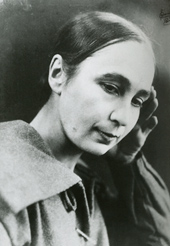
Russian artist, graphic artist, book illustrator, stage designer, outstanding representative of Russian avant-garde.
She came from the Goncharov family, the descendants of Pushkin’s wife
Nataliya Goncharova’s brother. She is the daughter of Moscow architect S. M.
Goncharov. In1901, she entered the Moscow School of Painting, Sculpture and
Architecture where she studied sculpture under Volnukhin and Trubetskoi, painting
under Korovin. In 1907-1911, she took to folk art, Russian popular rural and
urban print lubok, ancient Russian
icon painting. In 1910, together with Mikhail Larionov, Goncharova became one
of the founders of the Bubnovy Valet
[“The Jack of Diamonds”] Society; in 1911–1912, she was a member of the Osliny Khvost [“Donkey’s Tail’] group, in
1913, of the Mishen [“Target”] group.
She illustrated many futuristic books by Alexey Kruchenykh and Velimir
Khlebnikov: Mirskontsa [“The
World-from-the-Other-End”] (1912), Igra v
adu [“Playing in Hell”] (1912), Vzorval
[“Explosion-ness”] (1913), Dve Poemy.
Pustynniki. Pustynnitsa [“Two Poems. Hermits. Hermitess”] (1913), Puteshestviye po vsemu svetu [“Travel Across
the World”]. In 1912, lithographic postcards with Goncharova’s drawings were published
at the initiative of poet Alexey Kruchenykh. In 1914, a separate series of big lithoprints
on a patriotic theme entitled “Mystic Images of War” was published.
In 1915, together with her husband Mikhail Larionov, she left Moscow and
in 1917 finally settled in Paris. In France she worked with Sergey Diaghilev
making designs for his ballets, painted and illustrated books. In her book illustrations of the 1920s,
Goncharova returned to icon painting techniques - bright colours, geometricised
silhouette, compact space, inverted perspective – complementing them with
European book features – initials, decorative border patterns – Skazka o tsare Saltane [“The Tale of
Tsar Sultan”] (1921), Slovo o polku
Igoreve [“The Lay of Igor’s Campaign”], Munich, Orkhis (1923).

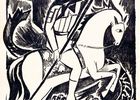
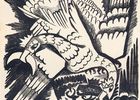
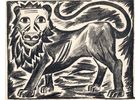
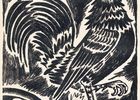
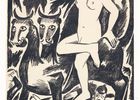
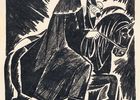
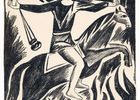
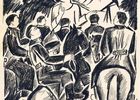
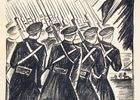
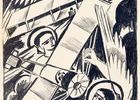
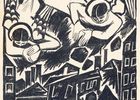
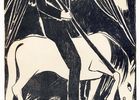
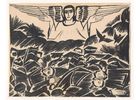
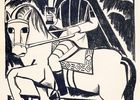
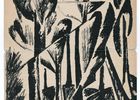
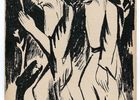
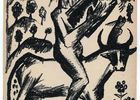
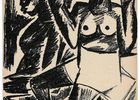
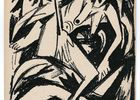
![Churilin T. Vesna posle smerti [“Spring after Death.”] Collection of poems. Cover.](/files/engraving/small/Gontcharova_007.jpg)
![Churilin T. Vesna posle smerti [“Spring after Death.”] Collection of poems.Illustration.](/files/engraving/small/Gontcharova_001.jpg)
![Churilin T. Vesna posle smerti [“Spring after Death.”] Collection of poems.](/files/engraving/small/Gontcharova_002.jpg)
![Churilin T. Vesna posle smerti [“Spring after Death.”] Collection of poems.Illustration.](/files/engraving/small/Gontcharova_003.jpg)
![Churilin T. Vesna posle smerti [“Spring after Death.”] Collection of poems.Illustration.](/files/engraving/small/Gontcharova_004.jpg)
![Churilin T. Vesna posle smerti [“Spring after Death.”] Collection of poems.Illustration.](/files/engraving/small/Gontcharova_005.jpg)
![Churilin T. Vesna posle smerti [“Spring after Death.”] Collection of poems.Illustration.](/files/engraving/small/Gontcharova_006.jpg)
![Churilin T. Vesna posle smerti [“Spring after Death.”] Collection of poems.Illustration.](/files/engraving/small/Gontcharova_013.jpg)